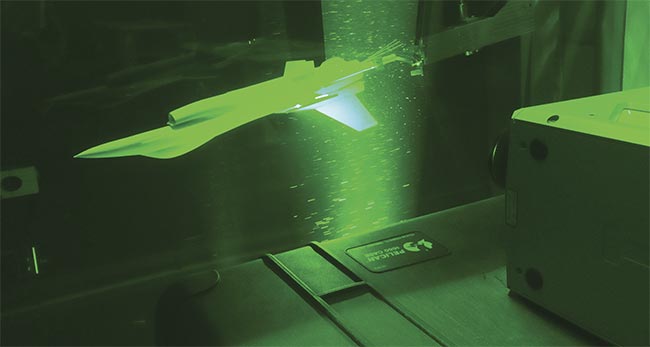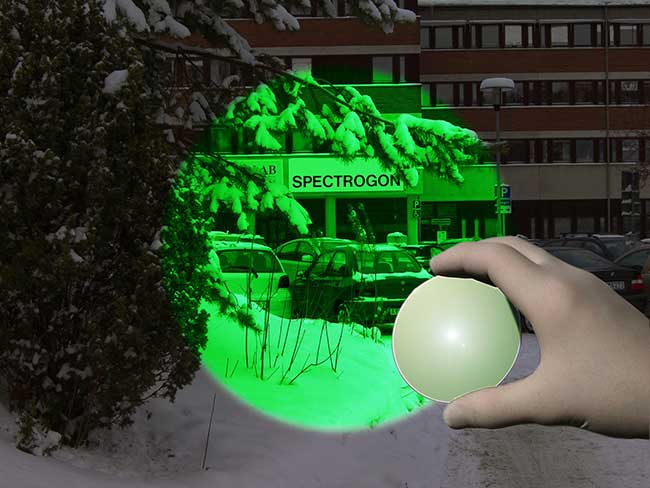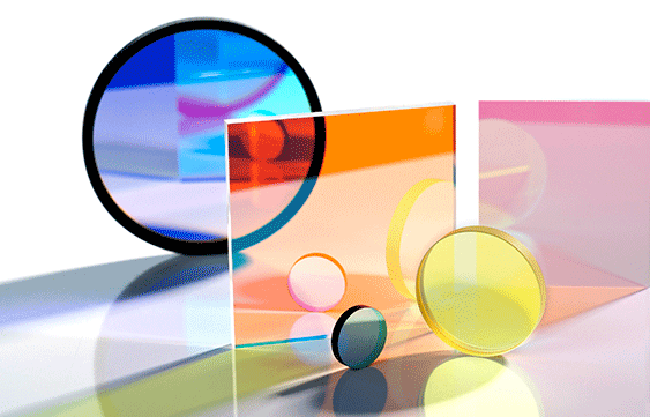|
|
Wednesday, February 12, 2020
|
Monthly newsletter from the editors of Photonics Spectra, with features, popular topics, new products, and what's coming in the next issue. Manage your Photonics Media membership at Photonics.com/subscribe.
|
|
|
| sponsor |

|
|
Laser Cleaning Techniques in Industrial Applications
For centuries, the techniques and equipment used for surface cleaning or renewal in industrial applications have remained the same. The demand for improvements, however, has grown dramatically in recent years. Laser technology is now replacing conventional abrasive and chemical processes in many applications, such as rust removal, depainting, degreasing, activation, restoration, pre-/post-welding joint cleaning, surface preparation, decontamination, and rejuvenation. As a cleaning technique, lasers are increasingly popular because they are precise, controllable, and efficient, and they generate low waste. Additionally, low waste and high efficiency are the primary reasons that laser cleaning is now considered the “greenest” or most environmentally friendly approach to surface cleaning. The only waste created is dust particles, which can be easily collected and removed.
|
|
|
|
|
|

|
Artificial Intelligence in Particle Image Velocimetry
The first article to use the term “particle image velocimetry” (PIV) was published in 1984. Since then, PIV has become a standard method for flow measurements. The technique has remained largely unchanged over the past 35 years. Continuous lasers or special double-pulse lasers, also known as PIV lasers, are used to generate laser light sheets with special optics. The light sheet illuminates a plane that makes visible the seeding particles that follow the flow. The light scatters off the particles and an image is taken with a camera, capturing an instantaneous snapshot of the flow. By taking a second image shortly afterward, the displacement of the particles between these two images can be seen. Then, by applying a cross-correlation algorithm, the velocity vectors can be calculated to find the direction and speed of the flow. When the analysis for the entire image has been completed, the resulting velocity field, vorticity field, and many other flow characteristics can be visualized and analyzed.
|
|
|
|
|
|
 Improving Devices with Plasmonics
Improving Devices with Plasmonics
Researchers are putting electron oscillations, or plasmons, to work and paving the way for instruments that could improve food safety and devices for future mobile communications. Additionally, plasmonic-enabled nanolasers could provide a means to link chips or subsections of chips, which would enable computers to become faster, smaller, and more efficient. However, scientists and engineers must first overcome challenges related to nanomanufacturing, high optical intensities, and optical losses.
|
|
|
|
|
|
 IR Filters for Thermal Imaging and Gas Detection
IR Filters for Thermal Imaging and Gas Detection
Spectrogon US
Spectrogon manufactures infrared filters and windows with high transmission, high rejection outside the passband, and introducing low cosmetic defects — while maintaining excellent coating uniformity — for thermal imaging applications such as cryogenically cooled IR detectors and for uncooled microbolometers.
Visit Website
Request Info
|
|
|
 Alluxa Ultra Series Filters and Coatings
Alluxa Ultra Series Filters and Coatings
Alluxa
Alluxa Ultra Series Filters, including Narrowband, Dichroic, UV, IR, and Notch filters, provide the highest performance optical thin film solutions available today. For example, the Ultra Series Flat Top Narrowband filters offer the narrowest bandwidths and squarest filter profiles in the industry.
Visit Website
Request Info
|
|
|
|
|
|
Light-Responsive Material Could Provide Basis for All-Optical Computing
A platform that could potentially be used for all-optical computing has been developed through a collaboration between researchers at McMaster University and the Harvard John A. Paulson School of Engineering and Applied Sciences. The technology brings together an adaptive, light-responsive material developed by the Harvard team with light manipulation and measurement techniques performed at McMaster.
|
|
|
|
|
|
Researchers at Hokkaido University have developed an approach to placing nanoscale semiconductors on metallic particles that is precise and cost-effective. Heat is localized on a gold nanoparticle within a butterfly-shaped nanostructure. The heat causes hydrothermal synthesis, which in turn causes semiconducting zinc oxide to crystallize on the gold nanoparticle. The Hokkaido team’s approach could open a new route to making nanosize semiconductors for nanolasing, nanolithography, and other applications.
|
|
|
|
Researchers from the Moscow Institute of Physics and Technology, Valiev Institute of Physics and Technology, and ITMO University created a neural network that learned to predict the behavior of a quantum system by “looking” at its network structure. This convolutional neural network is designed specifically to learn from graphs. It can autonomously predict which network solutions will demonstrate quantum advantage.
|
|
|
|
Optical Design and Fabrication: Considerations for Going Custom
Tue, Feb 25, 2020 1:00 PM - 2:00 PM EST
This webinar will address the items to consider when designing and fabricating a custom lens for any given system. Presenter Stuart Singer, chief executive officer at Schneider Optics, Inc., will review the basic parameters and specifications required to analyze a possible commercial off-the-shelf (COTS) lens solution, a modified COTS lens solution, or lens solutions that are fully modified to meet your requirements. He will review basic optics principles and provide practical guidance on optical specification, and will address custom lens design fabrication tolerances with regard to cost and feasibility for single application as well as serial mass production. You will learn how to convey your requirements to an optical design/fabrication company to obtain meaningful quotes and a full understanding of your options.
|
|
|
|
Features
Multispectral Imaging, Defense Lasers, 3D Sensing, and more.
Photonics Media is currently seeking technical feature articles on a variety of topics for publication in our magazine Photonics Spectra. Please submit an informal 100-word abstract to Susan Petrie, Senior Editor, at [email protected], or use our online submission form www.photonics.com/submitfeature.aspx.
|
|
|
 Since 1967, Photonics Spectra magazine has defined the science and industry of photonics, providing both technical and practical information for every aspect of the global industry and promoting an international dialogue among the engineers, scientists and end users who develop, commercialize and buy photonics products.
Since 1967, Photonics Spectra magazine has defined the science and industry of photonics, providing both technical and practical information for every aspect of the global industry and promoting an international dialogue among the engineers, scientists and end users who develop, commercialize and buy photonics products.
Visit Photonics.com/subscribe to manage your Photonics Media membership.
View Digital Edition
Manage Membership
|
|
|
|
|
|